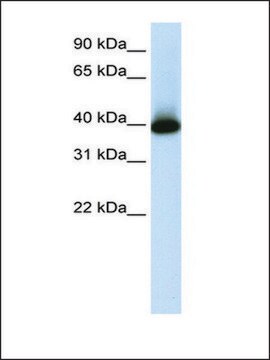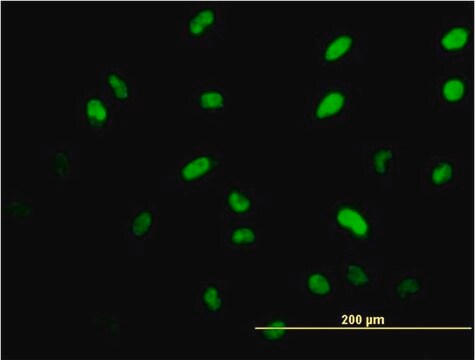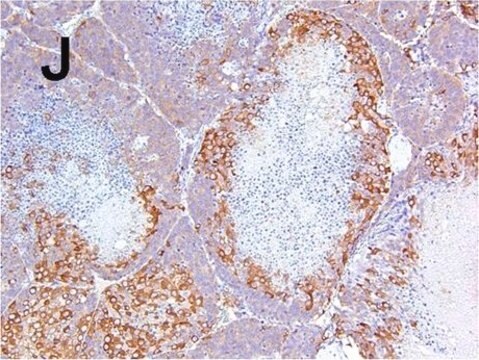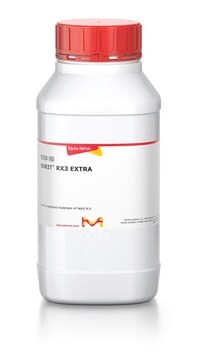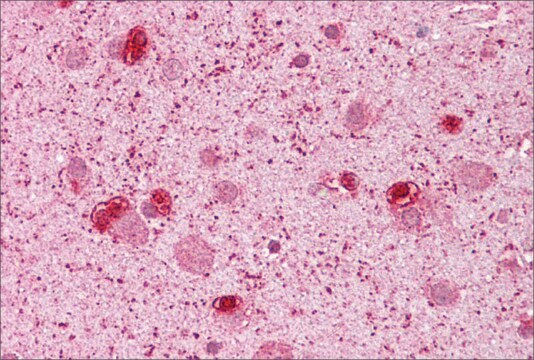ABN162
Anti-Gsh2 Antibody
serum, from rabbit
Synonym(s):
GS homeobox 2, Homeobox protein GSH-2
Sign Into View Organizational & Contract Pricing
All Photos(2)
About This Item
UNSPSC Code:
12352203
eCl@ss:
32160702
NACRES:
NA.41
Recommended Products
biological source
rabbit
Quality Level
antibody form
serum
antibody product type
primary antibodies
clone
polyclonal
species reactivity
mouse
technique(s)
immunohistochemistry: suitable
western blot: suitable
isotype
IgG
NCBI accession no.
UniProt accession no.
shipped in
wet ice
target post-translational modification
unmodified
Gene Information
human ... GSX2(170825)
General description
Gsh2 is a homedomain transcription factor that is critically involved in neurogenesis during embryonic development. It is involved in the development of the ventral forebrain structures from lateral ganglionic eminence (LGE) neuronal progenitor cells. Gsh2 may also delineate boundaries between cell types and control cell proliferation. Gsh2 functions downstream of the sonic hedgehog (Shh) pathway.
Specificity
This antibody recognizes the C-terminus of Gsh2.
Immunogen
Epitope: C-terminus
KLH-conjugated linear peptide corresponding to the C-terminus of mouse Gsh2.
Application
Anti-Gsh2 Antibody is an antibody against Gsh2 for use in Western Blotting & IHC.
Immunohistochemistry Analysis: A representative lot was used by an independent laboratory in mouse E14.5 telencephalon tissue. (Image courtesy of Dr. Kenneth Campbell, Division of Developmental Biology, Cincinnati Children′s Hospital Medical Center.)
Research Category
Neuroscience
Neuroscience
Research Sub Category
Developmental Neuroscience
Developmental Neuroscience
Quality
Evaluated by Western Blot in mouse E13.5 embryo tissue lysate.
Western Blot Analysis: A 1:500 dilution of this antibody detected Gsh2 on 10 µg of mouse E13.5 embryo tissue lysate.
Western Blot Analysis: A 1:500 dilution of this antibody detected Gsh2 on 10 µg of mouse E13.5 embryo tissue lysate.
Target description
~35 kDa observed
Physical form
Rabbit polyclonal serum containing 0.05% sodium azide.
Unpurified
Storage and Stability
Stable for 1 year at -20°C from date of receipt.
Handling Recommendations: Upon receipt and prior to removing the cap, centrifuge the vial and gently mix the solution. Aliquot into microcentrifuge tubes and store at -20°C. Avoid repeated freeze/thaw cycles, which may damage IgG and affect product performance.
Handling Recommendations: Upon receipt and prior to removing the cap, centrifuge the vial and gently mix the solution. Aliquot into microcentrifuge tubes and store at -20°C. Avoid repeated freeze/thaw cycles, which may damage IgG and affect product performance.
Analysis Note
Control
Mouse E13.5 embryo tissue lysate
Mouse E13.5 embryo tissue lysate
Disclaimer
Unless otherwise stated in our catalog or other company documentation accompanying the product(s), our products are intended for research use only and are not to be used for any other purpose, which includes but is not limited to, unauthorized commercial uses, in vitro diagnostic uses, ex vivo or in vivo therapeutic uses or any type of consumption or application to humans or animals.
Not finding the right product?
Try our Product Selector Tool.
Storage Class Code
10 - Combustible liquids
WGK
WGK 1
Certificates of Analysis (COA)
Search for Certificates of Analysis (COA) by entering the products Lot/Batch Number. Lot and Batch Numbers can be found on a product’s label following the words ‘Lot’ or ‘Batch’.
Already Own This Product?
Find documentation for the products that you have recently purchased in the Document Library.
Yueqi Wang et al.
Nature communications, 13(1), 5688-5688 (2022-10-07)
Human telencephalon is an evolutionarily advanced brain structure associated with many uniquely human behaviors and disorders. However, cell lineages and molecular pathways implicated in human telencephalic development remain largely unknown. We produce human telencephalic organoids from stem cell-derived single neural
Yan Wen et al.
Molecular neurobiology, 58(8), 3729-3744 (2021-04-07)
Specification of the progenitors' regional identity is a pivotal step during development of the cerebral cortex and basal ganglia. The molecular mechanisms underlying progenitor regionalization, however, are poorly understood. Here we showed that the transcription factor Vax1 was highly expressed
Carol C L Chen et al.
Cell, 183(6), 1617-1633 (2020-12-02)
Histone H3.3 glycine 34 to arginine/valine (G34R/V) mutations drive deadly gliomas and show exquisite regional and temporal specificity, suggesting a developmental context permissive to their effects. Here we show that 50% of G34R/V tumors (n = 95) bear activating PDGFRA mutations
Nevena V Radonjić et al.
Frontiers in neuroanatomy, 8, 82-82 (2014-08-29)
The complex structure and function of the cerebral cortex critically depend on the balance of excitation and inhibition provided by the pyramidal projection neurons and GABAergic interneurons, respectively. The calretinin-expressing (CalR(+)) cell is a subtype of GABAergic cortical interneurons that
Lin Yang et al.
Neuroscience bulletin (2021-08-11)
Human cortical radial glial cells are primary neural stem cells that give rise to cortical glutaminergic projection pyramidal neurons, glial cells (oligodendrocytes and astrocytes) and olfactory bulb GABAergic interneurons. One of prominent features of the human cortex is enriched with
Our team of scientists has experience in all areas of research including Life Science, Material Science, Chemical Synthesis, Chromatography, Analytical and many others.
Contact Technical Service